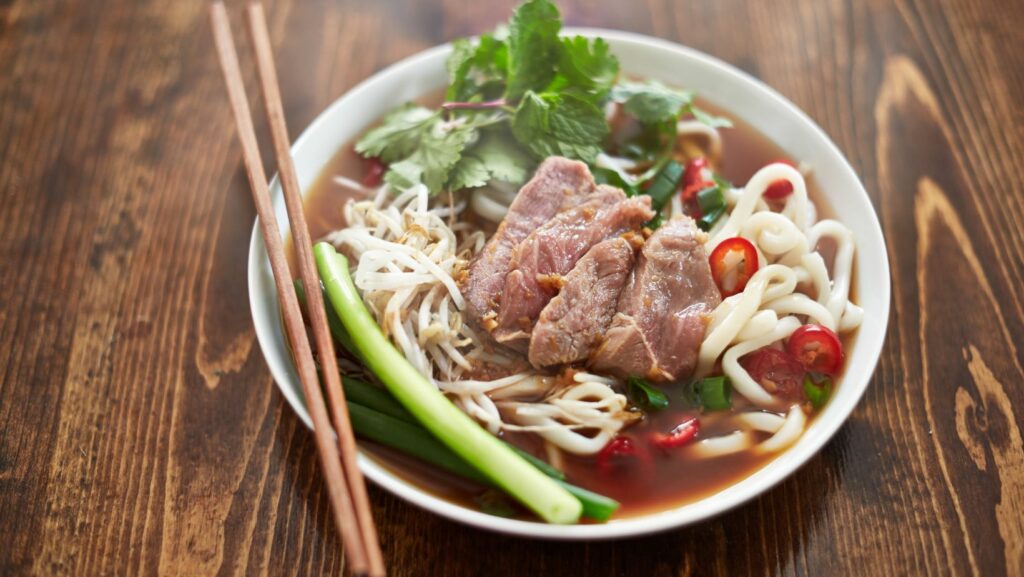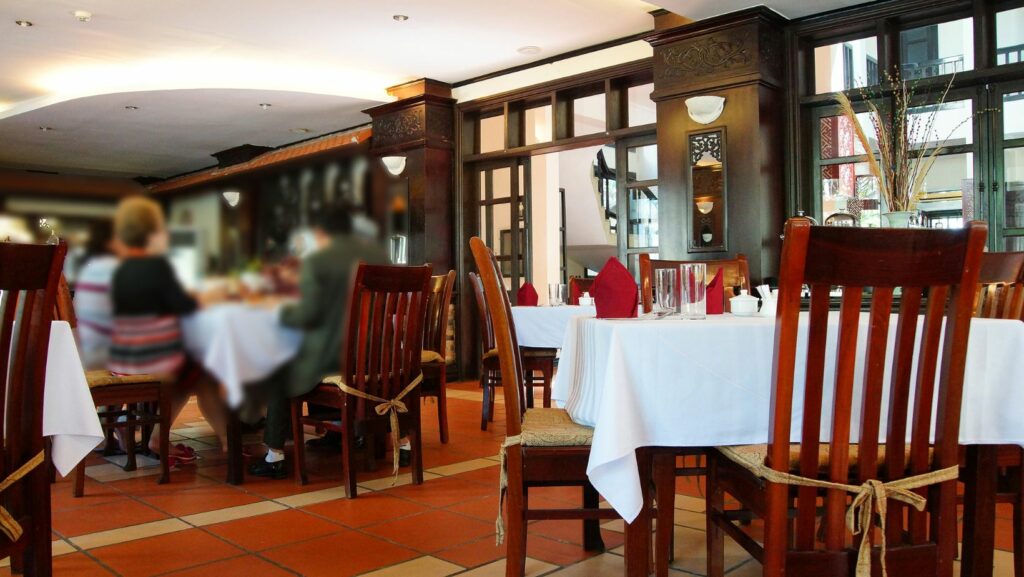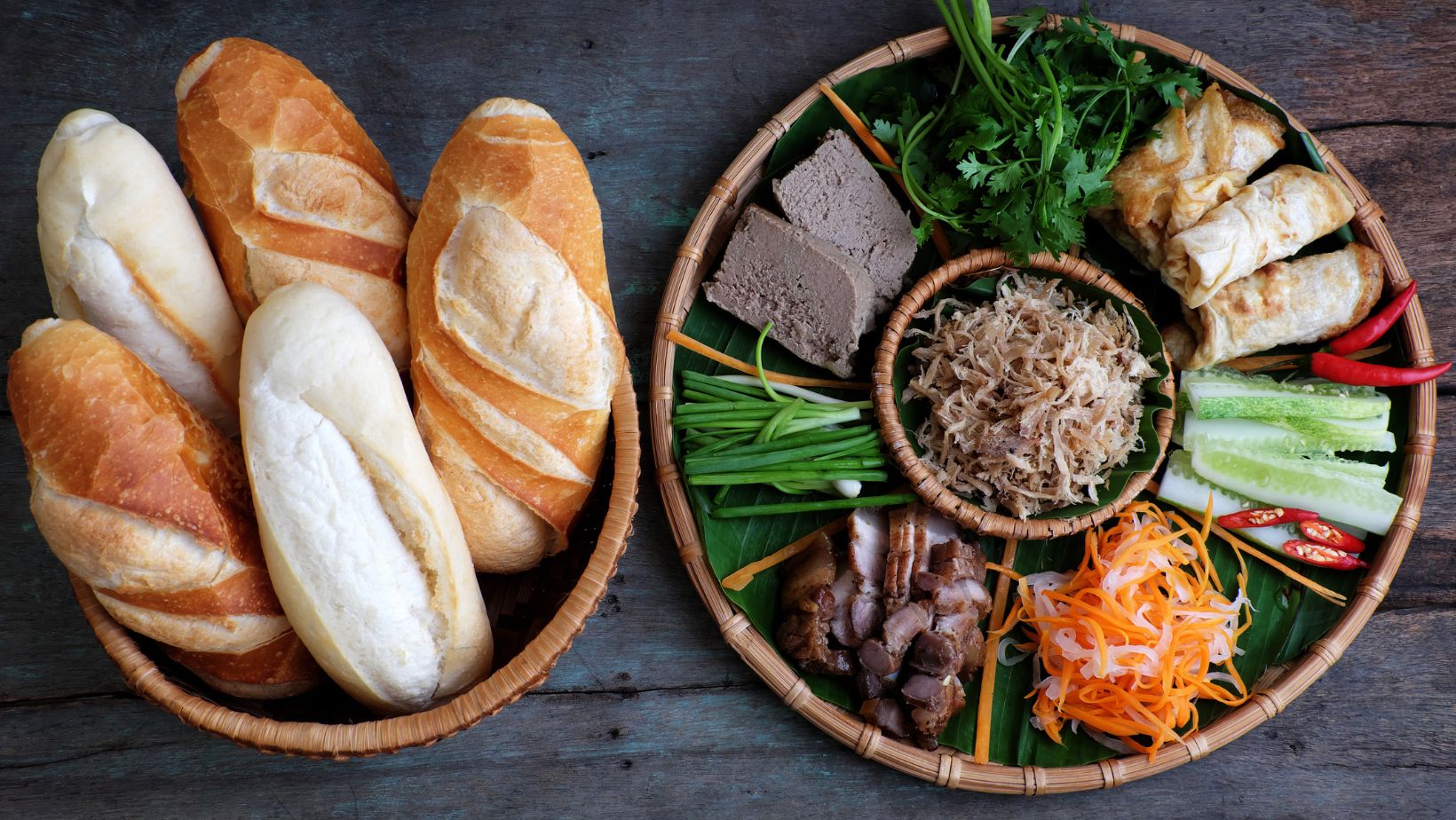
Vietnamese cuisine is a vibrant tapestry of flavors and textures, making it a compelling exploration for food lovers around the globe. Known for its delicate balance of sweet, sour, salty, and spicy flavors, each dish presents a harmonious blend that speaks to the essence of Vietnam. From bustling street markets to fine dining restaurants, Vietnamese food offers a unique culinary experience that captivates the senses.
Famous Vietnamese Food
Vietnamese cuisine captivates palates globally with its harmonious blend of flavors and innovative dishes. This section explores some of the most cherished Vietnamese foods, including Pho, Banh Mi, and Goi Cuon, each offering a distinct taste and cultural story.
Pho: Vietnam’s Iconic Noodle Soup
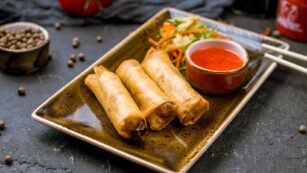 Pho serves as a cornerstone of Vietnamese culinary tradition, renowned for its aromatic broth and rich layers of flavor. Originating in the early 20th century in northern Vietnam, Pho consists of a savory broth, rice noodles, herbs, and meat, usually beef or chicken. The preparation involves simmering bones for hours to extract deep flavors, seasoned with spices like star anise, cinnamon, and cloves. Popular across Vietnam and internationally, Pho represents comfort food, often eaten for breakfast or lunch. Key cities like Hanoi and Saigon each offer their own regional variations, which transform the eating experience.
Pho serves as a cornerstone of Vietnamese culinary tradition, renowned for its aromatic broth and rich layers of flavor. Originating in the early 20th century in northern Vietnam, Pho consists of a savory broth, rice noodles, herbs, and meat, usually beef or chicken. The preparation involves simmering bones for hours to extract deep flavors, seasoned with spices like star anise, cinnamon, and cloves. Popular across Vietnam and internationally, Pho represents comfort food, often eaten for breakfast or lunch. Key cities like Hanoi and Saigon each offer their own regional variations, which transform the eating experience.
Banh Mi: The Fusion Sandwich
Banh Mi highlights Vietnam’s colonial history and culinary ingenuity. Emerging in the late 19th century during French colonial rule, this sandwich blends Eastern and Western tastes. It features a crispy French baguette filled with a variety of ingredients such as seasoned pork, pâté, pickled vegetables, cilantro, and spicy chilies. Over the years, Banh Mi has evolved with regional adaptations incorporating different fillings and sauces but always maintaining the crispy texture and rich flavors that make it a favorite. It’s available from busy street vendors and in cafes throughout Vietnam, symbolizing a quick, satisfying meal for locals and tourists alike.
Goi Cuon: Fresh Spring Rolls
 Goi Cuon, also known as fresh spring rolls, epitomize the freshness of Vietnamese cuisine. These rolls are packed with greens, herbs, shrimp, pork, and vermicelli noodles, all wrapped in a translucent rice paper. They’re served chilled with a side of peanut or hoisin dipping sauce. Goi Cuon is particularly famous for its combination of fresh ingredients that signify the agricultural abundance of Vietnam. Ideal for a light meal or starter, these spring rolls are a testament to the preference for fresh, vibrant ingredients in Vietnamese cooking. They’re prominent at celebratory gatherings and favored for their healthful qualities.
Goi Cuon, also known as fresh spring rolls, epitomize the freshness of Vietnamese cuisine. These rolls are packed with greens, herbs, shrimp, pork, and vermicelli noodles, all wrapped in a translucent rice paper. They’re served chilled with a side of peanut or hoisin dipping sauce. Goi Cuon is particularly famous for its combination of fresh ingredients that signify the agricultural abundance of Vietnam. Ideal for a light meal or starter, these spring rolls are a testament to the preference for fresh, vibrant ingredients in Vietnamese cooking. They’re prominent at celebratory gatherings and favored for their healthful qualities.
The Influence of History on Vietnamese Cuisine
Vietnamese cuisine reveals a fascinating interplay of historical influences, transforming its culinary landscape over centuries. From ancient imperial governance to French colonial rule, every era has left an indelible mark on the food of Vietnam, creating a diverse culinary repertoire recognized worldwide.
Ancient Foundations
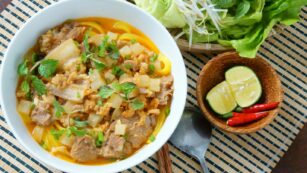 The foundations of Vietnamese cuisine date back to ancient times when rice cultivation shaped the primary dietary staples. Techniques such as rice noodle making and fish fermentation were developed during these early periods, impacting dishes like Pho, which incorporates these rice noodles in a savory broth.
The foundations of Vietnamese cuisine date back to ancient times when rice cultivation shaped the primary dietary staples. Techniques such as rice noodle making and fish fermentation were developed during these early periods, impacting dishes like Pho, which incorporates these rice noodles in a savory broth.
Chinese rule, which spanned over a millennium, introduced a variety of culinary techniques and ingredients, including stir-frying and the use of soy sauce. These elements are evident in many Vietnamese dishes today. The use of chopsticks and certain dumpling recipes also reflect Chinese influence.
French Colonial Impact
During the French colonial era, Vietnam embraced new cooking styles and ingredients, which led to the birth of iconic dishes such as Banh Mi. This sandwich uniquely combines French elements like baguette and pate with Vietnamese flavors such as cilantro, pickled carrots, and daikon. Coffee culture and the proliferation of bakeries emerged from French influence, greatly enhancing Vietnam’s culinary scene.
Modern Culinary Synthesis
In recent years, Vietnamese cuisine has continued to evolve, integrating flavors from various global cuisines while maintaining its unique characteristics. This synthesis is a testament to Vietnam’s ongoing cultural adaptation and innovation in the culinary arts. Through such evolution, Vietnamese food remains a compelling reflection of its rich and dynamic history.

